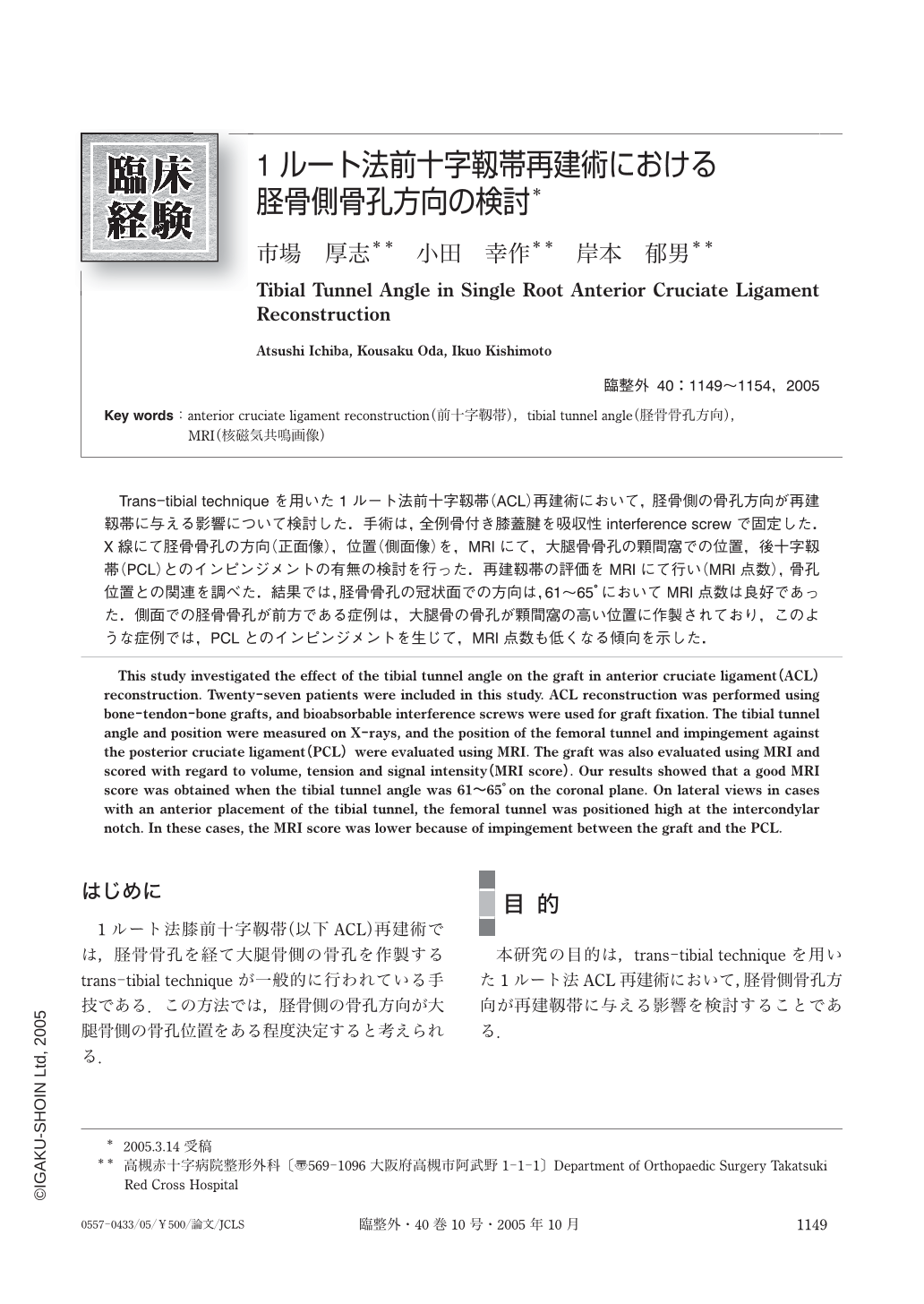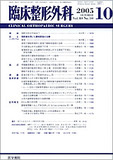Japanese
English
- 有料閲覧
- Abstract 文献概要
- 1ページ目 Look Inside
Trans-tibial techniqueを用いた1ルート法前十字靱帯(ACL)再建術において,𦙾骨側の骨孔方向が再建靱帯に与える影響について検討した.手術は,全例骨付き膝蓋腱を吸収性interference screwで固定した.X線にて𦙾骨骨孔の方向(正面像),位置(側面像)を,MRIにて,大腿骨骨孔の顆間窩での位置,後十字靱帯(PCL)とのインピンジメントの有無の検討を行った.再建靱帯の評価をMRIにて行い(MRI点数),骨孔位置との関連を調べた.結果では,𦙾骨骨孔の冠状面での方向は,61~65°においてMRI点数は良好であった.側面での𦙾骨骨孔が前方である症例は,大腿骨の骨孔が顆間窩の高い位置に作製されており,このような症例では,PCLとのインピンジメントを生じて,MRI点数も低くなる傾向を示した.
This study investigated the effect of the tibial tunnel angle on the graft in anterior cruciate ligament (ACL) reconstruction. Twenty-seven patients were included in this study. ACL reconstruction was performed using bone-tendon-bone grafts, and bioabsorbable interference screws were used for graft fixation. The tibial tunnel angle and position were measured on X-rays, and the position of the femoral tunnel and impingement against the posterior cruciate ligament (PCL) were evaluated using MRI. The graft was also evaluated using MRI and scored with regard to volume, tension and signal intensity (MRI score). Our results showed that a good MRI score was obtained when the tibial tunnel angle was 61~65° on the coronal plane. On lateral views in cases with an anterior placement of the tibial tunnel, the femoral tunnel was positioned high at the intercondylar notch. In these cases, the MRI score was lower because of impingement between the graft and the PCL.

Copyright © 2005, Igaku-Shoin Ltd. All rights reserved.


